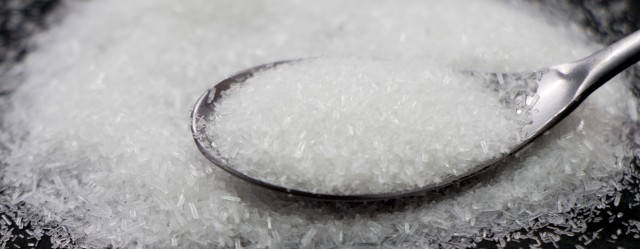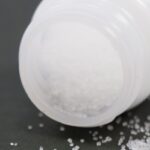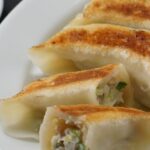
On December 9, 2021, “the guidelines of additive labeling for use of ‘non-use’” was announced. Please refer to the material “Changes since the last discussion meeting” as well.
On November 18, 2021, the Consumer Affairs Agency announced “Items by types of labeling for non-use additives (draft) that may cause misunderstandings” at the guidelines study group on non-use labeling of food additives. Below, I would like to summarize the outline of the proposal.
Background and purpose
The background for this is based on the summarization that “guidelines must be established to serve as a marker for whether a food additive is a prohibited item or not” in the “The Report on Discussion about the Labeling System for Food Additives (Draft)” published on February 27, 2020. The purpose is “to eliminate labeling such as “not added” that contradicts the content of the items to be labeled which is prohibited by Food Labeling Standards” or misleads the content of the product.
At this discussion meeting, proposals for items by types ① to ⑪ were presented, and the situation is now being examined to determine which of the following 11 items fall under two categories below as “labeling that may fall under the labeling prohibition stipulated in Article 9 of Food Labeling Standards.
(1) Labeling that may fall under the provisions of Article 9, Paragraph 1
(2) Labeling that does not immediately fall under the provisions of Article 9, Paragraph 1, but may cause misunderstandings by consumers.
Items by types (draft)
The following are the items by types ① to ⑪ shown as “Items by types of labeling for non-use additives (draft) that may cause misunderstandings”.
| No. | Summary | Detail |
|---|---|---|
| ① | Mere “not added” | ‘What is “not added”‘ is unclear e.g. Mere “not added” labeling |
| ② | Terms not stipulated in Food Labeling Standards | Terms used with “not added” or “non-use” is not specified in Food Labeling Standards e.g. Use terms such as “non-use of artificial sweeteners”, artificial, synthetic, chemical seasonings, natural, etc. |
| ③ | The use of additives is not permitted by the regulation | The use of additives is not permitted by the regulation for the certain foods e.g. “No sorbic acid is used” in soft drinks* / Labeling as “not added” or “non-use” of additives on the food with a name specified in Appended Table 5 of Food Labeling Standards, while such additives make the food with the claim fall outside the definition specified in Schedule 3 of the Act * Use of sorbic acid in soft drinks violates standards for use |
| ④ | Giving the impression that no additives are used at all | Giving the impression that no additives are used at all, even though additives are used. e.g. Labeling of “preservatives, colouring agent” with small font size on the side where “not added” is displayed with large font size (Additives are actually used except for preservatives and colouring agents) |
| ⑤ | Same function / similar function (additives) | Other additives that have the same or similar functions as XX are used, while labeling “XX not added” and “non-use of XX”. e.g. While labeling “no preservatives used”, using additives for the purpose of improving shelf-life/ While labeling “no synthetic colouring used”, using colouring in natural colouring |
| ⑥ | Same function / similar function (ingredients) | Other ingredients that have the same or similar functions as XX are used, while labeling “XX not added” and “non-use of XX”. e.g. While labeling that no chemical seasonings are used, using extracts containing amino acids as ingredients/ while labeling that no emulsifier is used, using ingredients with emulsifying properties such as egg yolk |
| ⑦ | Associating with health and safety | Associating “not added” or “non-use” with health and safety terms. e.g. Indicating “not added” or “non-use” as a reason for good health / Indicating “not added” or “non-use” as a reason for safety |
| ⑧ | Associating with something other than health and safety | Other than health and safety, associating with best before/used by date, functions of additives, good taste, etc. e.g. “non-use of preservative, please consume as soon as possible” / Labeling of no colouring as the reason for the possibility of discoloration of the product / Labeling of “not added” or “non-use” as the reason for good taste |
| ⑨ | Unexpected use of additives | Consumers generally do not expect additives to be used in their food e.g. Labeling of “no colouring” for foods that show their original colour / Labeling of non-use of an additive for a product that consumers do not expect to use the additive because similar products generally do not use the additives |
| ⑩ | Claims | Using excessively “not added” or “non-use” characters, etc. e.g. Indicating that “xx not used” multiple times in different locations /”xx not used” in larger letters or more prominent colours than the collective labeling column) |
| ⑪ | Processing aid, Carry-over | Using as a processing aid or carry-over (or cannot be confirmed not to be used) e.g. “No preservatives” is labeled on the final product, but preservatives are used in the ingredients/ It cannot be confirmed that no additives are used in the manufacturing process of the ingredients, so “not added” or “non-use” is labeled with a statement that it is limited to the company’s own manufacturing process. |
Future notes
In “Confirmation of whether or not it falls under Article 9 of Food Labeling Standards (draft)”, ①②③⑤⑥⑦⑧⑨⑪ falls under category (1) above (may correspond to labeling prohibited items), and ④⑩ fall under category (2) above (risk of causing misunderstanding among consumers). “The details are organized respectively. The following is an excerpt of points to note regarding ② and ⑤⑥, ⑦⑧from “Details of labeling considered highly likely to cause misunderstanding among consumers” in the same document.
As [② Terms not stipulated in Food Labeling Standards], the term “no chemical seasoning” is expected to not allowed to be used. It is important to note that in principle, all additives must be labeled without differentiating between chemically synthesized and natural according to Food Labeling Standards, and the Deputy Director-General’s Notice does not allow the use of the word “natural” or similar expressions in the labeling of additives.
Regarding [⑤Same function / similar function (additives)] and [⑥Same function / similar function (ingredients)], it is important to note that a part of CODEX, “it is not allowed to claim if the substance has been substituted by another giving the food equivalent characteristics unless the nature of the substitution is clearly stated with equal prominence” is cited as background for the classification. Also, to what extent concrete examples will be added in the future will be a practical point.
[⑦Associating “not added” or “non-use” with health and safety terms] item by type is that “additives have been evaluated for safety and are allowed to be used by the government only if they are not likely to harm human health. Therefore, it is difficult for businesses to conduct their own scientific verification of health and safety and relate them to these terms”.
Finally, regarding the type [⑧ Other than health and safety, associating with best before/used by date, functions of additives, good taste, etc.], it is important to note that “there is a risk of misleading people into believing that the product is better or more advantageous than it actually is” if a causal relationship between the reason for its deliciousness and the fact that it is “non-use of additives” cannot be explained.
By the end of March 2022, it is expected that the publication of the guidelines, the revision of the related Food Labeling Standards Q&A, and the revision of the related Fair Competition Code will be announced, so it would be better to check the details of the materials mentioned here at first.
[Postscript December 13, 2021]
The main changes
- Consolidated into “Labeling that is considered highly likely to fall under the prohibited labeling items specified in Article 9 of Food Labeling Standards”.
- Out of the 11 items by types, the former ④ and ⑩ were integrated and reorganized into 10 items by types.
References
- The 6th discussion on the guidelines of additive labeling for use of “non-use” (Nov. 18, 2021)
- The 7th discussion on the guidelines of additive labeling for use of “non-use” (Dec. 19, 2021)
- Outline of the 4th and 5th discussion meetings
- Confirmation of whether or not it falls under Article 9 of Food Labeling Standards
Share/Like/Follow:
Newsletter Signup
We issue monthly e-newsletters, which provide you with the latest updates on food labeling/regulations in Japan.
If you want to make sure to not miss any issue, please click below.
Related Service
Research Services on Ingredients & Food Labeling -For the Japanese Market-
We verify the conformity of ingredients and additives with the standards for use in Japan based on specifications such as formulation lists. We also verify the conformity of the proposed labeling of ingredient names, nutrients, etc. with the labeling standards based on specifications such as formulation lists.

Label bank Co., Ltd. CEO (Founder)
Born in Japan. Working on solving various issues related to food labeling operations. Also regularly gives lectures for various organizations in Japan.
Co-author of ‘Latest edition: Guide book Food Labeling Law and related business practical points – from scratch (Japanese version only)’ (DAI-ICHI HOKI CO., LTD/2019).



